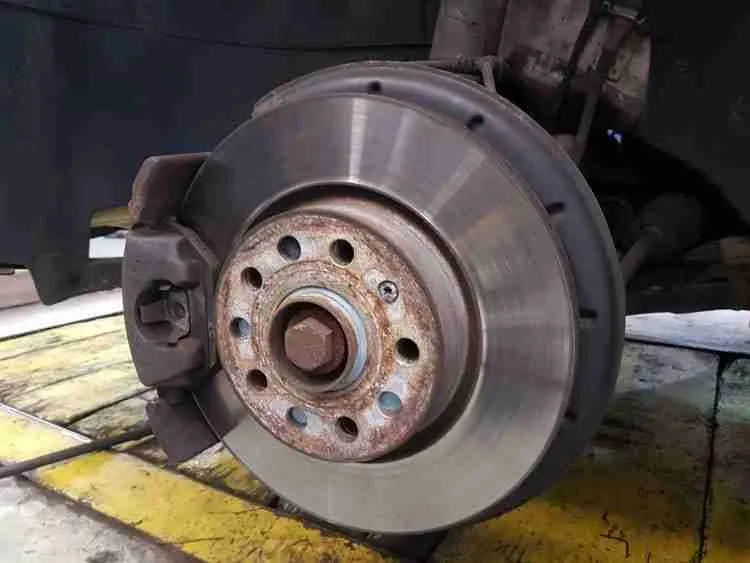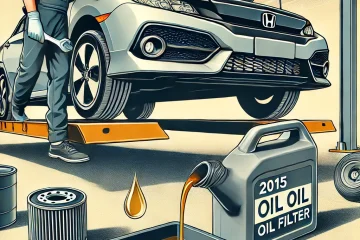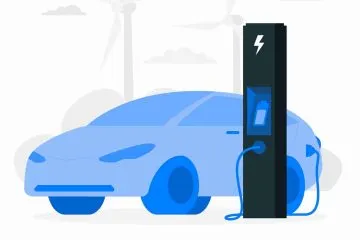How to Flush Brake Fluid with ABS

If your car is equipped with an Automatic Brake System, or ABS, then brake maintenance is something that should be on your radar as a car owner. Flushing your brake system may not have been something that you have ever heard of, but it definitely important. Doing so is proper preventive maintenance for your vehicle and will keep your car operating properly.
What is Brake Fluid?
Before we discuss how to flush the brake fluid in your ABS, you must first understand what brake fluid is and what it is used for. Brake fluid is necessary for your hydraulic brake system to work. When you need to slow down or stop, brake pressure pushes fluid down to your brakes. This pushes the brake pads on the rotor, which is attached to the wheel hubs. The more pressure that is pushed to these rotors, the more your car slows down. Over time, brake fluid goes bad. When this happens, your brakes will be less effective, or even ineffective if it gets bad enough.
4 Reasons Why You Should Flush Your Brake System
If you still aren’t sure if you should change your brake system, here are four good reasons why you should.
1. Brake fluid is hygroscopic.
This is the main reason that your brake fluid should be flushed relatively frequently. Hygroscopic means that something actively attracts moisture from the air. Because of this feature, brake fluid absorbs 3% of its weight in water each year. Too much water dilutes the effectiveness of your brake fluid. It also decreases the boiling point, meaning that when your brakes are working really hard, the fluid could start to boil and really begin to cause problems.
2. Contamination over time
As the brake fluid in your car gets older over time, it becomes contaminated with small particles. The presence of these small particles will reduce the performance of your brakes. While this may only cause miniscule changes in your brake performance, every inch counts when it comes to braking and safety.
3. Heat generation
Every time your Automatic Braking System and traction control activate, they generate heat. The heat generated by these processes breaks down your brake fluid. While this happens gradually over time, if it goes unnoticed, it can cause major braking issues. Paying attention to the quality of your brake fluid is vital for safety.
4. Sensitivity to moisture
The water and small particles that were mentioned previously also have a negative effect on the parts of your braking system. When small particles collect in your brake fluid, and water absorption is at higher levels, there is a chance that the expensive brake parts that make up your ABS will be damaged. These parts are extremely pricey to replace, and your car absolutely cannot be used when they are damaged or not working properly.
When Do I Need to Flush My Brake Fluid?
Unfortunately, there is no specific amount of time or miles that is recommended for brake flushing. This is something that you can have checked when you take your car in for maintenance or an oil change or inspection. Generally, if you are getting your brake pads replaced, it would be a good time to get your brake fluid flushed as well.
If you are someone that does a lot of stop and go driving, in a city for example, your brake fluid will likely need to be flushed more quickly and frequently than someone who does mostly highway driving. If you are concerned, there are testing strips that can be used to test your brake fluid. These strips test for the amount of moisture in your brake fluid. If the moisture content is too high, you can flush your brake fluid yourself.
How to Flush Your Brake Fluid
Before you start, make sure you have fresh brake fluid on hand. You will need this to replace the old brake fluid. Follow the steps below to properly flush the brake fluid from your ABS.
- Set your car on a level surface, in gear, with a stop behind the tires to prevent rolling.
- Open the hood and locate the brake fluid reservoir. This is where the brake fluid is filled from. Place an old towel around this reservoir to catch any splashing or spilling that may occur.
- Remove the cap, and use a turkey baster to remove as much of the old brake fluid as you can. Typically, about 20% of the old fluid will remain.
- Fill the reservoir up to the fill line with fresh brake fluid.
- Check the manual for your vehicle to see which brake caliper to bleed first. Then start with the caliper that it details.
- Jack up the side of the car where the caliper is that you need to bleed. Then remove the wheel and secure the car to access the caliper that you need.
- Locate the bleeder valve and cover with a rubber hose to prevent drips.
- Have an assistant or helper pump the brakes in the car four or five times for brake fluid to come out. Close the valve right before the bottom of the brake pedal is reached.
- Continue to repeat this process until you see fresh brake fluid coming out of the bleeding valve. Once you see fresh fluid, you can close the valve, remove the hose, and replace the wheel.
- Repeat this process for the remaining brake calipers until all four have fresh brake fluid running from them.
- During this process, check the brake fluid reservoir periodically to make sure the fluid level does not get too low. This will introduce air into the system, which is bad.
- Once this is all done and your wheels are replaced, top off the brake fluid reservoir with fresh brake fluid.
- Test the feel of your brakes before driving to make sure that they have enough pressure and that the pedal can be pressed smoothly and with proper force.













No Comment